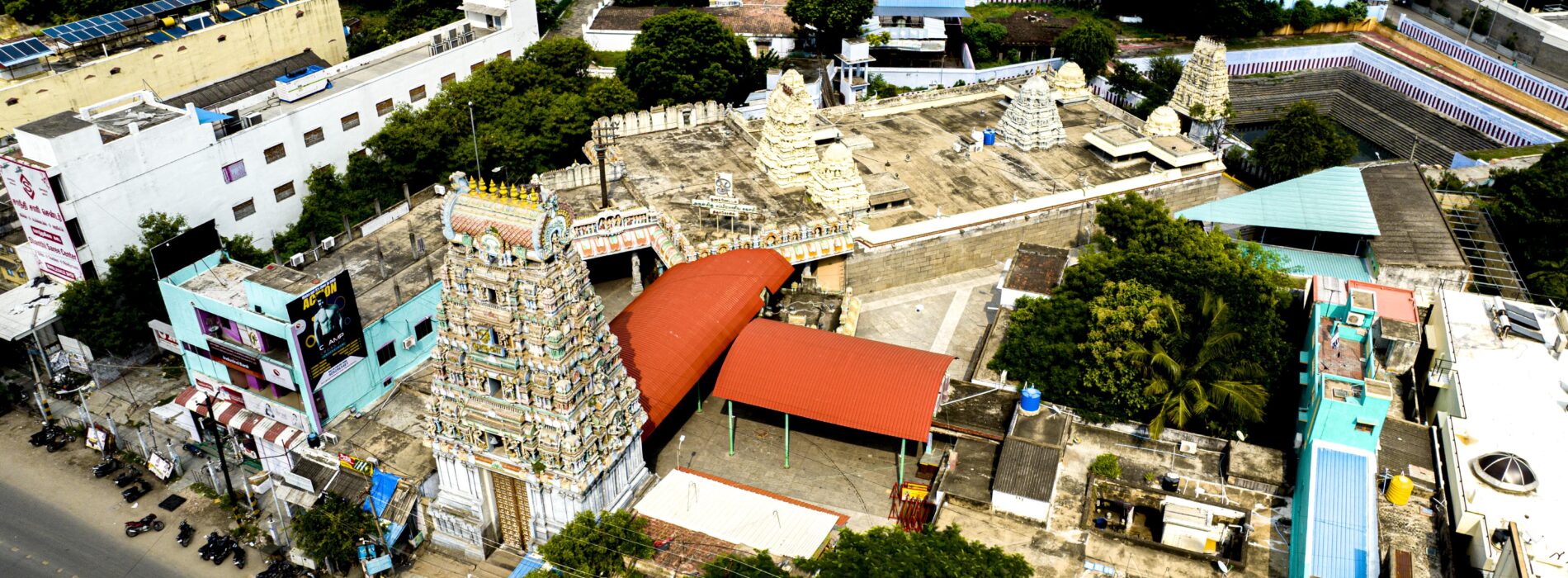Kumarakottam Temple
An Enchanting Abode of Lord Subrahmanya
Welcome to the mystical realm of Kumarakottam, an ancient temple dedicated to Lord Subrahmanya, nestled in the divine city of Kanchipuram. With its unique positioning between the divine abode of Goddess Kamakshi and the sacred Ekamranatha temple, Kumarakottam holds a special place in the hearts of devotees. In this blog post, we will explore the fascinating legends, architectural marvels, and the spiritual significance of Kumarakottam, where Lord Subrahmanya is ever anointed with honey.
Legends and Divine Lila:
According to Puranic legends, Kumarakottam carries a tale of humility, knowledge, and the bond between a father and son. Once, Brahma, the creator of all, displayed pride in the presence of Lord Subrahmanya. Testing Brahma’s wisdom, Lord Subrahmanya asked him to explain the meaning of the sacred Pranava Mantra, “Om.” Unable to answer, Brahma was imprisoned. Seeking his release, Lord Shiva and Lord Vishnu intervened, and eventually, Brahma was freed. This divine play highlights the importance of humility and seeking knowledge from a guru.
The Sanctum Sanctorum:
As you enter the temple through the magnificent Gopura on the western side, you will be greeted by the Kandapurana Arangetra Mandapam, a 16-pillared hall where the Kandapuranam, composed by Kacchiappa Shivachariyar, was first rendered. The temple has undergone reconstructions in recent times, but its spiritual essence remains intact. Within the temple, you will find shrines dedicated to Santhana Ganapati, Dandapani, Lord Shiva, and Lord Vishnu, along with images of Vinayaka and Kacchiappa Shivacharya.
The Divine Form of Lord Kumara:
In the garbhagrha, the sanctum sanctorum, Lord Kumara is depicted as Brahma Shasta, the form symbolizing Subrahmanya as the creator. He stands majestically, holding an akshamala (rosary) and a kamandalu (water vessel) in his upper hands. His lower right hand gestures the Abhaya Mudra, bestowing fearlessness, while the lower left hand rests on his hip. This unique representation signifies the role Lord Kumara assumed after imprisoning Brahma.
Madhvabhisheka and Festivals:
Lord Kumara of Kumarakottam is renowned for his fondness for abhisheka (ritual bathing) with honey, known as Madhvabhisheka. Except on the day of Deepavali, when sesame oil is used, honey is lovingly poured over the deity, signifying devotion and sweet surrender. The temple celebrates various festivals, including the Brahmotsavam during Vaikasi Visakam and Skandashashti during the Tamil month of Adi. Devotees throng to Kumarakottam on auspicious occasions like Shasti, Krithigai, and Tuesdays, seeking the divine blessings of Lord Kumara.
Devotees and Spiritual Luminaries:
Over the centuries, Kumarakottam has attracted numerous devotees and spiritual luminaries who have experienced the grace of Lord Kumara. Notable among them is Kacchiappa Shivacharya, the traditional priest and composer of the revered Kandapurana. Arunagirinatha, the renowned scholar and author of the Tiruppugazh song ‘Arivilappittar,’ and Sri Pamban Swamigal, who received divine guidance to find Kumarakottam, have also left their mark on this sacred place.
Kumarakottam, the abode of Lord Subrahmanya, exudes a divine aura that enchants devotees and seekers of knowledge. With its rich legends, awe-inspiring architecture, and the tradition of anointing the deity with honey, Kumarakottam holds a unique place in the hearts of its visitors. As you step into this hallowed space, let the divine presence of Lord Kumara guide you on a spiritual journey filled with humility, devotion, and the pursuit of true knowledge.




